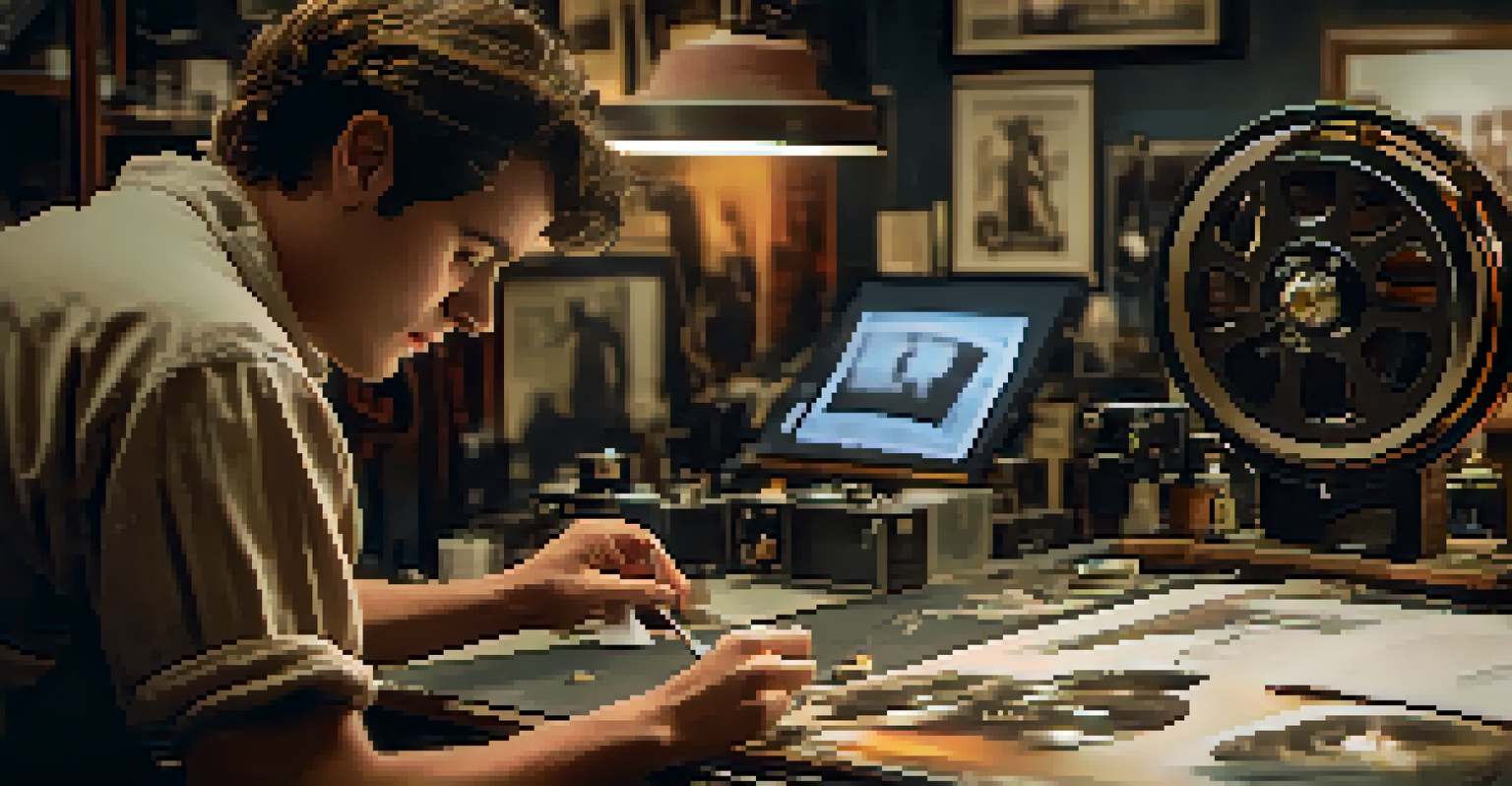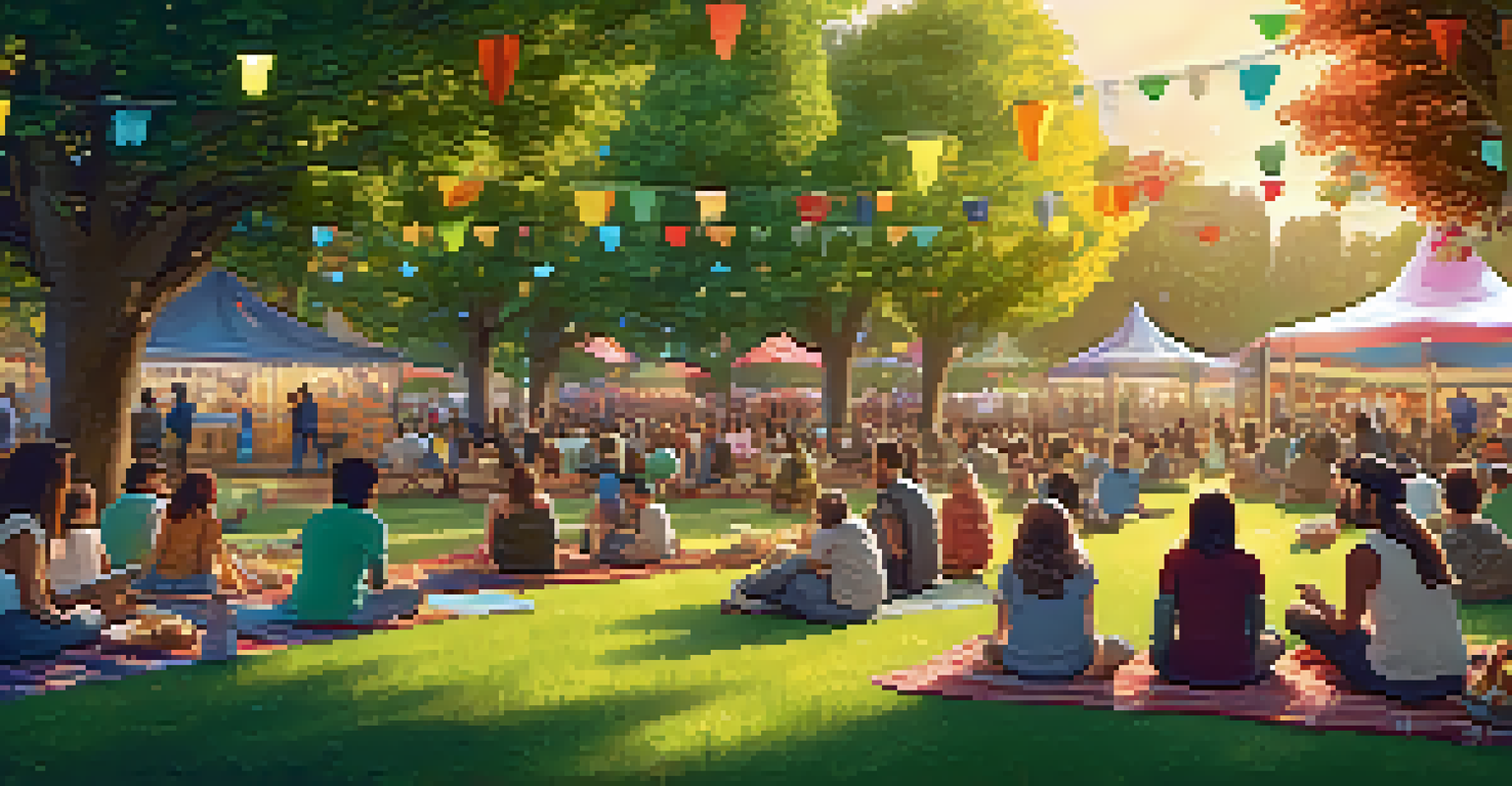Why Restoring Classic Films is Vital for Future Generations

Classic Films Provide Cultural Heritage and Identity
Classic films are more than just entertainment; they are a window into the culture and values of their time. They reflect societal norms, fashion, language, and even historical events, giving future generations insight into their heritage. For instance, films from the 1950s showcase the American Dream's evolution, capturing the hopes and struggles of that era.
Film can be a window to the past, allowing us to see how society has evolved and what values have changed.
When we restore these films, we preserve not only the stories but also the context in which they were created. This preservation allows future audiences to connect with their past, fostering a sense of identity and continuity. Imagine discovering a beloved family story told through the lens of a classic film; it enriches our understanding of ourselves and our communities.
Moreover, classic films often influence modern cinema, shaping genres and storytelling techniques. By restoring these films, we ensure that filmmakers today can draw inspiration from the rich tapestry of cinematic history, promoting creativity and innovation in the arts.
Restoration Preserves Artistic Integrity and Craftsmanship
The artistry involved in classic filmmaking is a treasure that deserves to be preserved. Restoring these films helps maintain the original director's vision, ensuring that the nuances of cinematography, sound design, and editing are appreciated as intended. For instance, the meticulous lighting and composition in a classic noir film can be lost without careful restoration.

Preserving these artistic elements not only honors the creators but also educates future filmmakers and audiences about the craftsmanship involved in filmmaking. By seeing the original work, new generations can learn about the skills and techniques that contributed to the art form. This appreciation fosters respect for the medium and encourages aspiring filmmakers to hone their craft.
Classic Films Preserve Cultural Heritage
Restoring classic films provides future generations with valuable insights into the culture and values of their time.
In a world dominated by digital effects, classic films remind us of the beauty of practical effects and storytelling. Restoring these films helps keep the conversation alive about the value of traditional methods in an ever-evolving industry.
Classic Films Foster Intergenerational Connections
Watching classic films can be a bonding experience across generations. Families often gather to share the joy of timeless stories, creating shared memories that transcend age gaps. For example, a grandparent might introduce a grandchild to a beloved classic, sparking conversations about life lessons and cultural shifts.
Cinema is a matter of what's in the frame and what's out of it.
These shared experiences encourage dialogue about values, challenges, and achievements that resonate across time. As family members discuss the themes and characters, they not only connect with the film but also with each other, strengthening familial bonds. This connection can help younger generations gain wisdom from the past while appreciating their roots.
Furthermore, classic films can serve as a bridge for discussions about contemporary issues. By comparing past and present societal challenges depicted in films, families can engage in meaningful conversations that build understanding and empathy.
Restoring Classic Films Keeps History Alive
Film is an essential historical document that captures the essence of its era. Restoring classic films ensures that future generations have access to these visual records, helping them understand the past. Think of classic films as time capsules, preserving insights into the social, political, and economic conditions that shaped societies.
Without restoration, many classic films could fade into obscurity, losing their relevance and impact. By maintaining these historical treasures, we provide future audiences with the tools to learn from history, reflect on past mistakes, and appreciate progress. It's a reminder that while society evolves, some lessons remain timeless.
Restoration Maintains Artistic Integrity
Film restoration helps preserve the original vision and craftsmanship of filmmakers, ensuring that audiences appreciate the artistry involved.
Moreover, classic films can inspire advocacy and activism by highlighting social issues from the past that still resonate today. By restoring and sharing these important narratives, we empower future generations to engage with their history actively.
The Role of Technology in Film Restoration
Advancements in technology have revolutionized the film restoration process, allowing us to preserve and enhance classic films with remarkable accuracy. Techniques such as digital scanning and restoration can bring back the vibrancy and clarity that older films may have lost over time, making them even more enjoyable for contemporary audiences. This technology serves as a bridge between the past and present, breathing new life into beloved classics.
However, it's crucial to use technology responsibly to maintain the integrity of the original work. Restoration should enhance the film without altering its essence, ensuring that future viewers experience the film as the creators intended. This delicate balance is what makes the work of film restorers so vital; they act as guardians of cinematic history.
As technology continues to evolve, it also opens up new opportunities for accessibility. Restored films can be made available on various platforms, reaching wider audiences and ensuring that these classics are not confined to dusty archives.
Cultural Diversity Through Restored Classic Films
Restoring classic films also allows for the celebration of diverse voices and perspectives in cinema. Many classic films present stories from underrepresented communities, providing valuable insights into their experiences and contributions to society. By restoring these films, we highlight the rich tapestry of cultural narratives that have shaped our world.
This diversity in storytelling is essential for fostering understanding and empathy among different cultures. By viewing these restored films, audiences can engage with perspectives they may not encounter in mainstream media, promoting a more inclusive understanding of history. For instance, classic films from various countries can showcase unique customs, traditions, and societal challenges.
Community Engagement in Film Projects
Film restoration projects foster community involvement and pride, encouraging local historians and enthusiasts to connect over shared cinematic history.
Encouraging the restoration of films from diverse backgrounds also supports filmmakers and artists from those communities today. By honoring their contributions to cinema, we inspire new generations of storytellers to share their narratives, enriching the global film landscape.
The Community Impact of Film Restoration Projects
Film restoration projects often involve community engagement, bringing together film enthusiasts, historians, and local artists. These collaborations can spark excitement and interest in local film history, encouraging community pride and participation. When a classic film is restored and screened in a community, it can become a cultural event that fosters connections and conversations.
Moreover, these projects can help educate audiences about the importance of film preservation. Workshops, discussions, and screenings can raise awareness about the challenges of maintaining classic films, encouraging individuals to support preservation efforts. This grassroots movement can create a ripple effect, inspiring more people to become advocates for film restoration.

Community involvement in restoration projects can also lead to the discovery of forgotten films that deserve to be preserved. By collaborating with local archives or universities, we can uncover hidden gems that reflect the unique stories of a region, ensuring that these narratives are not lost to time.